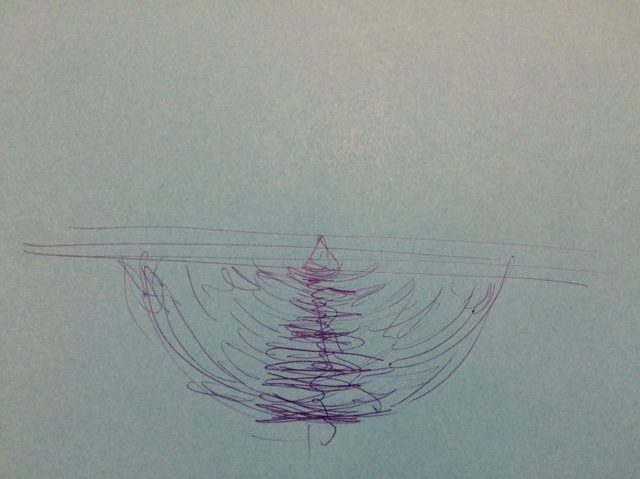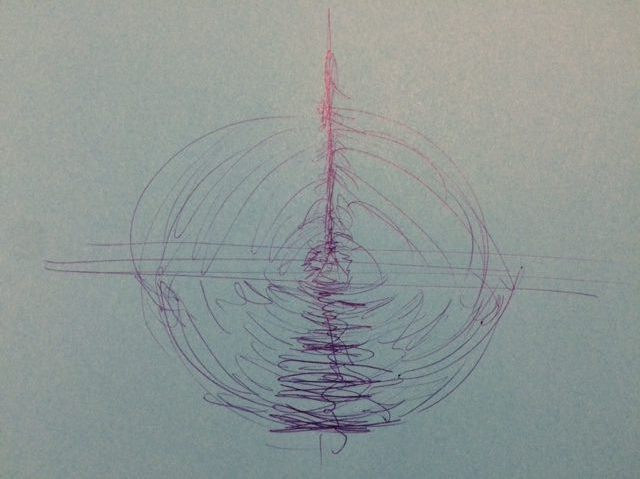Nabokov used to tell his students that “a good reader, a major reader, an active and creative reader is a rereader.” By a similar token good writers, serious writers, even if they’re minor and not especially creative writers like us, are rewriters. This raises the interesting question of how “revision” fits into the writing process.
Revision of course plays a major role in writing instruction. (See, for example, the late, great Scott Eric Kaufman.) But this doesn’t mean the same thing for all writers. Anne Lamott famously promotes the idea of writing “shitty first drafts”, with the implication that good and great writing only emerges through revision. Jonathan Mayhew, however, has challenged this idea. “At some point the writer needs to learn how to write,” he argues, “not just revise.” I side with Jonathan on this. Especially for academic writers, I don’t think it’s a good idea to let our ideas tumble out of us inchoately (and often simply incoherently) onto the page, leaving it to our future selves to clean up the mess we’re gleefully making of the present. I think we should sit down and write the best paragraphs about things we know that we’re capable of in the moment. Like Jonathan says, that’s the only way we’ll actually become good writers.
The first drafts will not be perfect, but they will not be shitty either. Revision will still be necessary, but much less. The experienced writer will avoid certain kinds of mistakes on the first draft. After all, if you can’t write, you won’t be able to revise either, because re-writing is still a form of writing. A good writer needs to know the feeling of composing a good sentence, once in a while, on the first try. I’d much rather have a model that emphasizes the development of the writer’s competence.
Too many writers fail to really enjoy this “feeling of composing a good sentence”; they don’t give themselves the time to really experience what writing is. Instead, they write their first draft to a low standard (having deliberately freed themselves of a higher one) and then struggle valiantly to clarify their own confusion in later versions, often leaving them exhausted and uncertain they ever knew anything at all. This is a tragedy because a good writer should feel sane and strong while writing — perhaps the sanest and strongest they can be. Writing a scholarly paper should, for the most part, be an entirely lucid experience — the experience of knowing what you’re talking about. It should not be the experience of roughing something out that you’ll have to polish up later.
So where does that leave revision? Well, if you’re following my rules, your draft (at any stage) will consist of a series of orderly paragraphs, each of which says one thing and supports, elaborates or defends it. You can identify the paragraph by its key sentence and position it in an outline. Already there, you can “revise” (or re-vision) your text simply by imagining the same paragraphs in a different order, the same claims arranged in a different sequence. You can also imagine the claims sharpened a little or broadened a little — giving them a more definite point or a wider scope. And you can make separate, independent judgments about whether the reader will find these claims hard to believe, understand or agree with. Now you’ve got your work cut out for you.
Importantly, this revision of the key-sentence outline has set up a re-writing task. Print out your current draft (perhaps just as a PDF to open in a separate window) and make a separate document with all your (revised) key sentences in the (revised) order you’ve settled on. Beside each sentence there will be a simple marker (“S”, “E”, “D”) telling you whether to support, elaborate or defend it. You’ll probably have around 40 paragraphs if you’re writing a standard paper in the social sciences. That means you’ve got 20 hours of work in front of you. Make a plan to (re)compose each paragraph carefully and deliberately in a 27-minute writing moment, using the material in your original draft (where an earlier version of the paragraph already exists) as your notes — perhaps supplemented with other notes or sources. If 27 minutes seems like too much time (perhaps this is your third or fourth revision?), try 18 or 14 minutes. But in all cases physically re-write the paragraph. Type it in. Don’t copy and paste. Pass your text through your own hands. It will be good for your style.
I don’t just mean that it will be good for the style of the text you’re working on right now. I mean that it will make you a better writer. It’s not that all good writing has been rewritten many times in this way. (Some good writing does in fact emerge from the revision of shitty drafts.) It’s that good writers are the product of continuous, deliberate practice. They have written and rewritten the same ideas many times. They have become good at writing down what they know for the purpose of discussing it with other knowledgeable people. And, as Ezra Pound reminded us long ago, “one definition of beauty is: aptness to purpose.” Don’t just improve your text through revision. Improve your writing through rewriting.

